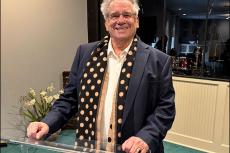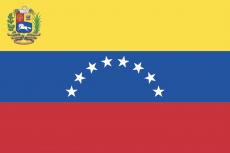Employees of the Town of East Hampton, as well as owners of newly installed low-nitrogen septic systems, were struck by scenes of startling déjà vu last week as residents who took advantage of Suffolk County grant money to upgrade their wastewater systems last year opened their mailboxes to find 1099-G forms indicating that the Internal Revenue Service considers the grant to be taxable income.
The 1099-G form is used to report income from a government source, including “taxable grants.” Many of the recipients of the county’s water-protection grants — which help homeowners replace old septic systems with low-nitrogen systems — did not receive any payout from the county; the grant money was paid directly to contractors who installed them.
The issue of whether or not the grant money should be taxable came to light last spring, when previous grant recipients were surprised to receive 1099-G forms. It soon turned into a political dogfight between the office of County Executive Steve Bellone and the County comptroller, John Kennedy, who at the time was himself running for county executive.
Last fall, Bess Rattray of East Hampton was among the residents who took advantage of the county and New York State grant system to replace an old, failing septic system inside the town’s Water Protection District. She also was approved for a rebate from the town. Both the grant program and the rebate aim to encourage the replacement of outdated, polluting systems with those that remove most nitrogen. High nitrogen levels are blamed for the ground and surface water contamination that has degraded waterways.
“The county and state grant total for me was $25,000,” said Ms. Rattray, who is the editor of The Star’s magazine, East, “and it was not paid to me, but paid to the company that installed the new septic system,” Clear River Environmental of Ronkonkoma. “The county paid Clear River,” she said last week. “None of the county or state money passed through my hands.”
Ms. Rattray submitted receipts for out-of-pocket costs including fees for engineering and plumbing services to the town’s Department of Natural Resources, and was reimbursed. “All through this, I didn’t know if I’d be getting a 1099, or not,” she said. She sent an email to the county official who had processed her application seeking an answer to that question earlier this winter. “I didn’t get a reply,” she said.
Officials in the Natural Resources Department, Ms. Rattray said, indicated last month that she would not receive a 1099-G form from the county, as they had been briefed that the Suffolk County grant money was being paid directly to the installer. (She should, however, expect to receive a 1099-G from the town for the rebate she had received to cover the ancillary services, she was told.) Believing the matter to be closed, Ms. Rattray filed her federal income tax return late last month. Then, last week, “I got a 1099 from Suffolk County for $25,000 in taxable grant money.”
Officials at the Natural Resources Department were “very surprised” when she carried the 1099-G into the town offices, she said — as was the county official they informed about Ms. Rattray’s experience. “The county executive’s office apparently wasn’t notified that 1099s were being sent out again, either,” she said.
Kim Shaw, director of the Natural Resources Department, said on Monday that the department has been contacted by “a handful of residents who’ve also received a 1099 from the county. Her department had not been told to expect that, she said. Mr. Kennedy, the comptroller, had been “waiting for a decision from the I.R.S.,” Ms. Shaw said. That decision was announced in a January letter stating that the septic system upgrade grants do indeed count as taxable income.
Mr. Kennedy has been criticized by other county officials, who accuse him of politicizing the county’s water-quality improvement efforts.
“We have reached out to the comptroller,” Ms. Shaw said, “and haven’t heard back.” She said that the names of residents who had contacted the town about the 1099 forms they received were forwarded to the county’s Office of Ecology, which is overseeing the grant program. An official of that department did not return a call seeking comment.
East Hampton officials who had championed the program as a conduit for improved water quality were less than delighted with the turn of events. “I’m very disappointed to hear from the Suffolk County comptroller, who’s issued them for the recipients of grants whether they received the money directly or not,” Supervisor Peter Van Scoyoc said on Tuesday.
“We’re going to have to take a very careful look at the way the program was set up. To me, there’s very little if any direct benefit to private property owners as a result of these grants and incentives; there’s a huge community benefit. Therefore I don’t think they should be taxed, because of that community benefit.”
Mr. Van Scoyoc said he would work with state and federal officials “to see if we can’t figure out a way to give these incentives.”
“This is a critical issue for us in terms of trying to preserve and restore our local waters,” the supervisor said. “Now, for it to be taxed means that that program, in most cases, people would pay about a third of that value, depending on their tax bracket. . . . Some people may not be able to come up with that extra money. I think that’s a shame.”
Learning that the county grant is considered taxable income “will have a chilling effect on the program,” Mr. Van Scoyoc predicted, “just as the program was really starting to take flight.”
Representative Tom Suozzi of New York’s Third Congressional District, who is a member of the House Ways and Means Committee, which is the principal tax-writing committee in Congress, announced on Tuesday that he has written to the Internal Revenue Service commissioner, Charles Rettig, asking that he reconsider the ruling that county residents must pay taxes on septic upgrade grants. The I.R.S. ruling, he told the commissioner, “concluded that 1099 forms should be issued not only to the installing companies that receive disbursements under the program, but to the homeowners who do not. I strongly oppose this decision as it undermines the program’s mission,” just as it undermines “similarly constructed programs such as the State of Maryland’s Bay Restoration Fund,” which did not require 1099 forms to be issued to property owners.
Mr. Suozzi told the commissioner that he is “eager to discuss potential solutions to help protect our environment and groundwater without putting any additional onus on Suffolk County homeowners who are already struggling with the recent cap on their state and local tax deductions.”



